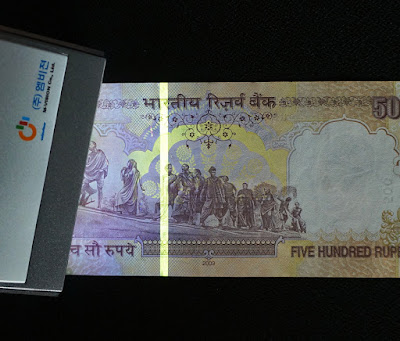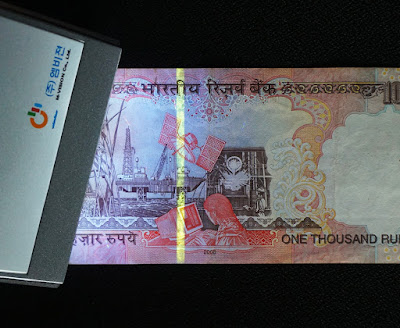We will now check fluorescent security measures on 500 rupee bills and 1,000 rupee bills via using UV LED Detector MP12t.
1. 500 Rupee
2) Back : The whole side is sensitive to UV light, the fluorescent green band emerges where the partially-exposed line is located. And a part of the design 'Salt Satyagraha' at the back turns to fluorescent green.
2. 1,000 Rupee
1) Front : The serial number at the bottom left turns fluorescent red, and the overall front design responds to UV light. The design of 1,000 rupee bill is in red tone but, when lit with UV light, turns to fluorescent yellow or green. Just like 500 rupee bill, the letters RBI(Reserve Bank of INDIA) and “भारती” repeated on the partially-exposed silver band also turn to fluorescent green. The serial number of the bill on the top right is also turns fluorescent blue.
2) Back : The whole overall side is fluorescent and the fluorescent green band emerges where the partially-exposed line is located. Unlike the 500 rupee bill, other parts of the back side does not emerge as fluorescent.
No damaged or frayed bills are accepted in India as they are considered counterfeited. However, they keep their bills in bunch by stapler so there could be small holes in the middle of the bills. There are also some cases where you can get counterfeited money from ATMs and are not refunded or compensated by the bank for that. So travelers to India must be aware of such risk.
You can contact us : uvleddetector@mv21.co.kr





